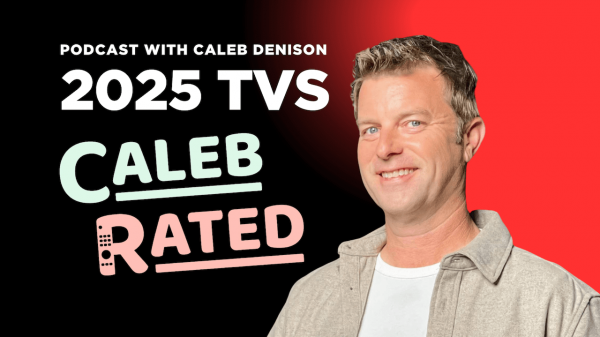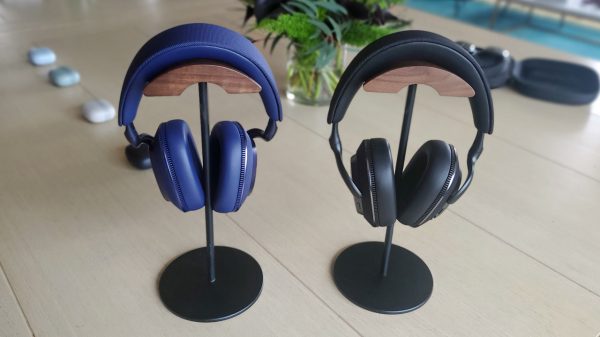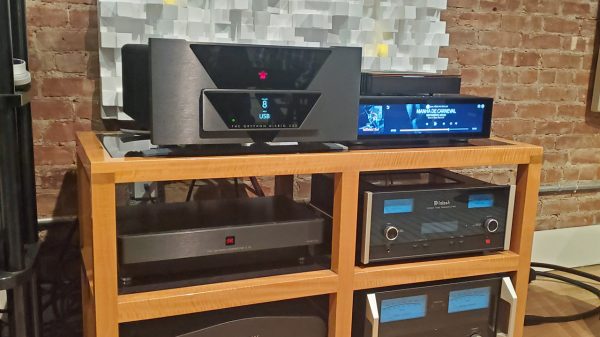Table of contents
Not everyone is in the market for new components or loudspeakers right now even with inflationary pressure easing and whilst some manufacturers lowered their pricing back to pre-pandemic levels — the majority did the exact opposite. With less to spend, audiophiles are always looking for ways to improve what they already own. The best audio accessories offer incremental improvements, whilst others like room correction software can be game changers that make you jump off the gear fetishism train — and enjoy what you have. That’s the point.
Spending $1,000 on a power cord is not a wise investment; it will not transform your music listening experience.
Neither will $1,000 audiophile network switchers.
Spending that amount of money on more music will have a far greater return on investment.
So what has worked for us? Let’s take a walk.
Best for Cleaning Your Records
Record Doctor VI 20th Anniversary Edition Record Cleaning Machine

The resurgence of vinyl was not only a boon for turntable and cartridge manufacturers but for the vinyl accessories market as well. Record cleaning machines never really vanished with brands like VPI and Nitty Gritty keeping the market well supplied but the rebirth of the record created an opening for other brands already in the analog playback space to offer their own cleaning machines.
Consumers can spend anywhere from $80 to $6,000 for a record cleaning machine and there is some merit to the expense if your record collection continues to grow and you really care about preserving your collection and the lifespan of your cartridge.
Clean records sound better and that means more playback hours for your cartridge if you take the time to clean and store your vinyl properly. The VPI HW 16.5 has to be considered the go-to unit if you have a large record collection and want something that will last a very long time. It’s also loud and not the prettiest piece of industrial design but it does the job well every single time.
We know people who still use 20 year-old units on a daily basis and will buy nothing else.
The issue, however, for most people getting into vinyl is the price of a record cleaning machine; the VPI HW 16.5 ($1,045 at Audio Advice) costs more than most people have spent on their table/cartridge and it’s almost hard to believe that the VPI has gone up by over $400 over the past 6 years.
For those with much smaller budgets, the Record Doctor VI is a better option.
The Record Doctor VI utilizes a high-performance vacuum motor to remove all of the cleaning fluid and dirt from the surface of your records while you manually turn the record with the included injection-molded turner that also covers the entire record label to prevent damage.
The unit comes with a deep-cleaning applicator brush which you use to scrub clean the grooves with a record cleaning solution; the manufacturer sells their own cleaning solution, but we had good success with both VPI and Mobile Fidelity cleaning solutions as well.
For $300, the Record Doctor VI does the job and without a lot of fuss. Like any record cleaning machine with a vacuum, there is a noise factor to contend with and this unit is only slightly quieter than other units that we have used.
Pros:
- Affordable compared to the competition
- Effective at cleaning with the supplied brush and cleaning solution
- Can work with 3rd party cleaning solutions
Cons:
- Manual rotation
- Loud
- Need to empty the reservoir after 25 records
For more information: Record Doctor VI
Where to buy:
Turntable Lab Triple Operation Record Brush

Turntable Lab CEO and Founder, Peter Hahn, very graciously sent me a sample of their new Triple Operation Record Brush and I’ve had a chance to use it for the past few months. It is a dry cleaning solution and something that I alternate with the AudioQuest Anti-Static Record Brush on vinyl after it has gone through one of my wet record cleaning machines.
Do I think everyone should own a wet record clearing machine? Unless you don’t mind the noise and have a substantial investment in your collection — I think most people can survive with something like a manual SpinClean and TTL Triple Operation Record Brush.
Product Details:
- highly-effective brush for everyday, dry record cleaning
- (2) non-abrasive cleaning pads pick up dirt + larger particles, while (2) rows of carbon fiber bristles pick up dust + finer particles
- conductive design adds charge to the carbon fiber bristles to help attract dust
- wide 4.6″ cleaning area
- convenient dustcover with cleaning brush
- contoured, no-slip moulded handle
I have very large hands so the contoured handle feels very secure as I sweep upwards without fear of ever losing control and watching the brush destroy one of my phono cartridges. A well made product for $25 that has already cleaned well over 200 records effectively.
Pros:
- Durable construction
- Effective at cleaning
- Contoured handle makes it easy for those with larger hands to grip and clean
- Very affordable
Cons:
- Dry cleaning doesn’t dig down deep into the grooves
Where to buy:
GrooveWasher Vinyl Record Care System

The GrooveWasher Vinyl Record Care System includes their proprietary record cleaning solution, a removable record cleaning brush that can be used either wet or dry, and a label protector.
The oil-rubbed walnut handle completes the package and is built to last a very long time; it looks far more expensive than it is.
For those who don’t want to spend hundreds of dollars on a record cleaning machine, the GrooveWasher kit works rather effectively; you spray each side of your record before playing it and clean it with the brush, wiping away all of the fluid from the surface of the record.
Having recently inherited over 400 45 RPM singles from the grandfather of my best friend who passed away and knew that I would appreciate them — I’ve had a chance to clean a lot of records in my spare time.
The cleaning solution and process doesn’t provide for a deep cleaning in the grooves as one might get with a VPI HW16.5 — but that option has escalated to almost $1,000 in price (it was $650 USD less than 4 years ago).
For a quick surface cleaning, which most of my records only require because I’ve already washed them with my Record Doctor VI Cleaning Machine, the GrooveWasher kit is an excellent option.
Pros:
- Kit has almost everything you need for only $49
- Effective at cleaning
- Label protector
Cons:
- Does not offer the type of deep cleaning that a machine can offer
Where to buy:
IsoAcoustics zaZen Isolation Platform

The zaZen is an isolation platform designed for turntables, tube amps, and other sensitive audio equipment. The combination of the platform mass and the integrated IsoAcoustics isolation technology allows audio gear to reveal greater acoustic clarity and detail. The zaZen is available in two sizes: zaZen I with a weight capacity of 25 lbs (11.3kg) and the zaZen II with a weight capacity of 40 lbs (18.1kg). The zaZen features a medium gloss black finish over a dense fiber construction.
Isolation products come in many different shapes and sizes and while they certainly have an impact on the sound – the results are not always what you expected. Improvements in one area of sound reproduction are offset by a negative change elsewhere.
We took delivery of a zaZen II platform and experimented with three turntables; a Thorens TD-145, NAD C 588, and Thorens TD-160 Super. The NAD C 588 weighs substantially less than either one of my restored Thorens tables and benefitted the most from the zaZen which lowered its noise floor, tightened up the bass response, and improved the overall transparency of the sound. The presentation moved slightly forward with the zaZen installed which was a benefit with the Q Acoustics 3050i loudspeakers in my system.
Placed underneath both a Croft RIAA phono pre-amplifier and Cambridge Audio Evo 150 had a very positive impact on the sound; the Croft which suffers from a tiny degree of hum was quieter than usual (I’ve always suspected that its thin metal chassis was the cause), and the Evo’s midrange was more transparent sounding.
The impact under the two Thorens tables was different because of their suspension; both tables are susceptible to foot falls and the platform placed on top of a media credenza did isolate them better in my den which has very bouncy floors.
Is the zaZen more effective underneath lighter equipment that is more susceptible to vibration or footfalls (in the case of a turntable)? Unquestionably so.
Pros:
- Does impact the overall sound quality in a positive way
- Highly effective under lighter components (under 20 pounds)
Cons:
- Not inexpensive
- Heavier components need one of their larger isolation platforms
For more information: IsoAcoustics zaZen Isolation Platform
Where to buy:
Analog Restorations Turntable Mats

The Garden State definitely loves its live music, rock stars, and record stores. We gave the world Bruce, Bon Jovi, Frank Sinatra, Sarah Vaughan, Lauryn Hill, Donald Fagen, Bill Evans, Wayne Shorter and Count Basie. It’s also the home of VPI turntables and Analog Restorations.
Have you ever wondered where people on Instagram are getting those fantastic custom cork platter mats?
There’s a company in New Jersey that makes them and we’re huge fans.
The cork platter mats start at $26 and you can have it customized. The record cleaning wipes are more expensive but they work really well on dirty records that you might pick up at a used record store.
Pros:
- Excellent quality and endless artwork options
- Does tighten up the sound
- Solid value for the money
Cons:
- May have to raise the VTA on your tonearm
- You are likely to order more than one
For more information: 10 Questions for Analog Restorations
Where to buy:
IsoAcoustics Delos Isolation Platform

Isolating components from vibration is a worthwhile exercise but it has always been a bit of a crapshoot with all of the various options available. Some products eliminate one problem and then create another; enhanced transparency at the expense of midrange warmth. I’ve heard it with cones, discs, and multi-layered platforms that all seem to work but never without some form of change that I dislike long-term.
Turntables are probably the most difficult component to isolate but the rewards can be very worthwhile. Suspended turntables (Thorens & Linn) are more susceptible to footfalls or other forms of vibration and benefit tremendously from proper isolation.
The Delos combines a substantial butcher block with IsoAcoustics’ patented isolation technology. The design consists of a top isolator, bottom isolator and a connector. The isolation is a result of the way the 3 parts work together, so there is not a single path connecting the live equipment to the supporting surface.
The Delos is designed to work with turntables, tube amplifiers, and other source components and proved its worth almost immediately when placed underneath my restored Thorens TD-160 Super turntable; footfalls were eliminated and there was an immediate increase in soundstage depth, along with a reduction in the background noise. The Delos isn’t inexpensive but there is no question that it works.
Pros:
- Excellent build quality
- Are very effective under suspended turntables and amplifiers
- Different models are available for smaller or larger components
Cons:
- Expensive
For more information: IsoAcoustics Delos Isolation Platform
Where to buy:
Best Affordable Cables
Expensive audiophile cables are a hard sell for a lot of people and we totally get it after almost 3 decades of wasting far too much money on cables that really didn’t offer the performance and value for the money that we expected.
That doesn’t mean, however, that you should not consider better quality audiophile cables. Just don’t blow your entire budget on a very expensive power cord thinking it is going to dramatically transform the overall sound quality of your system.
$3,000 power cords are a waste of money. You have probably noticed that every review of such a product is a rave. Nothing can touch its magic touch. The system took on mind-blowing levels of resolution.
Do you honestly believe that the reviewer is going to write anything negative about that product? Do you think the manufacturer would ever send said reviewer another cable to review if the review isn’t a raging river of praise?
Chord Company ShawlineX ARAY Cables

Having taken the plunge over the past decade with QED and Analysis Plus, I feel confident telling you that products like the Chord Company ShawlineX ARAY will also get you 90% of the way there and that you are better off investing in a better pair of loudspeakers or amplifier than mega-priced cables.
The ShawlineX are so good at what they do for a reasonable amount of money that they give me a modicum of hope that some manufacturers understand that there needs to be greater emphasis on more affordable products and that consumers who are new to high-end audio will turnaround and explore something else if the industry pushes the “audiophile” cables schtick on them.
The Chord Company ShawlineX ARAY offer solid build quality, excellent sound quality with a wide array of components and loudspeakers, and deliver tremendous value in a category filled with overpriced products that don’t deliver enough of an uptick in performance to justify their prices.
Pros:
- Solid build quality
- Very good value for the money
- Everything sounds more open and detailed
Cons:
- Will make you glare at the more expensive cables in your system
Read our review here.
For more information: chord.co.uk
QED Golden Anniversary XT Loudspeaker Cables

Loudspeaker cables are a hot topic for audiophiles and after 24 years of listening to dozens of different brands, I’m ready to just pick something from my toy trunk (which my 16 year-old son felt he was too old for) in the basement office and be done with it.
Synergy is real and I’ve certainly had a few experiences over the years where $3,000 cables sounded terrible with specific loudspeakers or amplifiers. That sounds ridiculous, but substituting a $100 pair of loudspeaker cables for the more expensive one actually worked better.
I already own sets of the QED XT25, Reference XT40i, and Signature Revelation loudspeaker cables; which are all very affordable, well made, and very good options for someone who has to review a lot of different loudspeakers and amplifiers.
These new QED Golden Anniversary XT cables are even less expensive than the XT25 that ran me $130 for a 6-foot pair.
The QED Golden Anniversary XT Loudspeaker Cables are a fantastic bargain for their asking price; the build quality, termination, and overall sound quality are very hard to fault.
However, that doesn’t make them the “perfect” solution for every scenario.
Pros:
- Solid build quality and termination
- Warm tonal balance
- It’s super affordable for the performance
Cons:
- Tonal balance might not be ideal in already darker sounding systems
- Need to offer longer lengths
MSRP: £27 / €35 / $40 per meter | QED Dealer Locator
Related Reading: QED Audio Cables: Proof You Don’t Have to Go Nuts
QED Reference High Resolution USB Cable

USB cables are a necessary evil for digital audio if using your laptop or a network streamer and there is no shortage of opinions in regard to the wide range of prices from $15 for a generic one from Staples or Monoprice and the very esoteric ones from some audiophile cable brands that retail for more than the components they are connected to.
Having tried some very expensive USB cables with reference level digital playback gear, I’m convinced that there is some merit to pricier models that offer better construction quality and superior RFI shielding. Where I go off the reservation is when the price exceeds about $150 for a 6-foot cable — which I know sounds like an insane amount of money for a digital cable. Because it is!
QED has a long track record of building affordable loudspeaker cables and interconnects that sound excellent and are built to last. Their loudspeaker cable is cheap by audiophile standards and has never been the weak link in any system I have tried it with.
I’m a lot more skeptical when it comes to USB cables. The QED Reference High Resolution USB cable uses a 24 AWG, 99.999% oxygen-free copper twisted-pair featuring low-permittivity, and foamed-polyethylene dielectrics, which are bound by an aluminium/mylar wrap. It is a flexible design that is easy to route behind a crowded equipment rack and the connection is solid on both ends.
From a sonic perspective, it is most certainly on the neutral side. It adds no additional warmth to the sound and offered a very transparent presentation across the frequency spectrum. Detail is easy to discern and there is solidity in the bass. If your DAC adds some color to the presentation, the Reference High Resolution USB cable won’t alter that in any way.
Compared to the entry-level cables from Staples and Monoprice, the QED offers superior build quality and a more transparent sounding presentation; vocals are more forward sounding while maintaining whatever flesh on the bones exists on the recording.
Pros:
- Neutral tonal balance
- Build quality and termination connectors
- Spending more on a digital cable than this is a waste
Cons:
- Vocals are slightly forward sounding compared to other cables
- $130 for a digital cable
Where to buy:
THX HDMI Interconnect

With so much skepticism surrounding the value and advantages of high-end audio/video cables, it is understandable that some might read our review of the THX HDMI Interconnect and think we’re a collection of fools who believe that this cable could offer anything better or different than the products available from Monoprice or Staples for less money.
Designed in partnership with Pixelgen Design Inc., the THX HDMI Interconnect offers support for 4K/8K displays, HDCP 2.3, eARC, and CEC.
Gaming features such as VRR (Variable Refresh Rate), ALLM (Auto Low Latency Mode), QFT (Quick Frame Transport), and QMS (Quick Media Switching) are also supported through both cables; there is also the PXLGLASS 8 hybrid optical fiber/copper HDMI cable that is designed for long runs of up to 50 feet.
The THX HDMI Interconnect is a best-in-class family of Ultra High Speed HDMI Cables with full HDMI 2.1b functionality that ensures all home theater components will have the highest resolution at the highest bandwidths at all lengths up to 15m (~50ft).
The reality is that the THX HDMI Interconnect is well made, has proven to be durable after being connected and disconnected more than 30 times over a period of two months from 4 different TVs and multiple sources, and we have observed positive changes to the image quality on all of the aforementioned high-end TVs at our disposal.
Will it transform your viewing experience? Unlikely. Is it affordably priced and compatible with almost every format and device we tried? Without question.
THX has created a really solid product that won’t be coming out of my system anytime soon.
Pros:
- Solid build quality and robust connector
- Easy to install in tight spaces
- Reduces image noise
- Affordable
- Compatible with all 4K/8K sources and HDCP 2.3, eARC, and CEC
Cons:
- Does not magically transform 1080p content into breathtaking 4K content
Where to buy:
THX Interconnects are available in various sizes at pixelgendesign.com:
- 0.5m/1.6ft – $39.99
- 1.0m/3.3ft – $44.99
- 1.5m/4.9ft – $49.99
- 2.0m/6.6ft – $54.99
- 3.0m/9.8ft – $74.99
- 5.0m/16.4ft – $184.99
Best for Speakers
IsoAcoustics Aperta Isolation Stands

Vibration is the enemy; both in the recording studio and in your home when it comes to sound quality. Put your hand on your loudspeaker while listening to music and you’ll immediately feel how the energy produced by the drivers causes the cabinet to resonate. That level of resonance affects how your loudspeaker sounds. External vibration from your room, equipment stand, or loudspeaker stands impacts how your loudspeakers sound as well.
The Aperta with an overall size of (W x D x H) 6.1” x 7.5” x 3” or 15.5 cm x 19 cm x 7 cm isn’t just one size fits all either. Specifically designed for use with bookshelf, desktop or floor standing speakers, they are available in different models to fit specific sizes and weights of medium-sized speakers. Sculpted from aluminum frames, the Aperta creates a parallelogram structure with isolators in the top and bottom sections to provide a high level of separation of sound. Build quality on the Aperta is superb.
Tip: IsoAcoustics Iso-Puck Acoustic Isolators can work instead for heavier speakers or subwoofers. Just be sure to match the weight to each speaker and purchase 4 for each speaker.
The Aperta offer a range of tilt which makes it extremely useful if you place your loudspeakers on a bookshelf or desktop and want to angle the tweeter at your ears and not at your chest. The impact on the sound is not subtle; the clarity of the sound improves dramatically, bass tightens up, and everything sounds more focused.
One thing I did notice with warmer sounding bookshelf loudspeakers like the Q Acoustics 3030i, and Wharfedale Diamond 10.1s was a reduction in midrange coloration that some might find takes away from the impact of the presentation. Bass tightened up significantly but also lost some of its visceral impact. Vocals were rock solid in the soundstage and the presentation took a step forward as well.
Pros:
- Excellent build quality
- Highly versatile on a desktop or credenza
- Significant impact on the tonal balance
Cons:
- The flipside of the improvements in clarity and focus is the loss of some texture and coloration
For more information: IsoAcoustics Aperta Isolation Stands
Where to buy:
Best for Headphones
DDHifi DJ65M Adapter

It doesn’t seem like it would be particularly hard to create an adapter from ¼ inch (6.35mm) to other sizes, but experience has proved otherwise. The DDHifi DJ65M provides a Neutrik 6.35mm female port, and a 24k plated 3.5mm male jack connected by high-purity OCC copper wire all housed in a machined 6063 aluminum alloy for durability.
It’s now lasted a bit over a year with literally hundreds of insertions and shows no signs of any wear. Plus it has never failed to deliver flawless audio even when moving with the source and headphones.
Where to buy:
Related Reading:
- Best Phono Cartridges to Upgrade Your Turntable
- Best Audiophile Phono Preamps
- Podcast: The Best Phono Cartridges Under $350











































Chris Snyder
August 24, 2021 at 5:51 pm
High Resolution USB Cable…LOL
Ian White
August 24, 2021 at 6:02 pm
I agree that the marketing terminology is weird and somewhat laughable.
That being said…and I hate expensive cables, it’s a really good cable. I’ve tried it with 13 DACs and network amplifiers and I wouldn’t want to swap it out.
Ian
Drexel Lake
December 26, 2022 at 4:11 pm
The better the quality of components, the better quality signal. If you’re into the audio hobby you’ll want to try different things to see how they work for you and your system. In my experiences over 40 years most so called snake oil works in many cases. But if you prefer to get your info off audio forums, you’ll never know.
Ian White
December 26, 2022 at 5:28 pm
Depends on your definition of “snake oil.”
The IsoAcoustics products are effective at isolating loudspeakers but also change the sound; I’ve used the stands with over 30 pairs of bookshelf loudspeakers and they all sound more neutral or cooler when used compared to being placed on the top shelf of my media unit.
Cables are form of tone control and having tried everything from $0.40/foot stuff from Home Depot and $2,000/foot speaker cables and power cords — there is some serious BS going on in terms of the claims companies make.
Spending a few hundred dollars on speaker cables makes sense in the context of a $10,000 system. Spending $1,000 on a single Ethernet cable is stupidity.
Power conditioners can make a system sound worse. I’ve tried 4-5 over the years and they all ended up in my HT system with source devices and my OLED TV.
Cable lifters? Tennis ball cut in half can do the same thing.
Bamboo cutting boards from IKEA work under components rather well.
Ian White
STEPHEN FLESCHLER
December 28, 2024 at 5:15 am
I have had a good mid-fi systems for most of 40 years. Much equipment is classic and doesn’t change (highly modified SME IV tonearm with Cardas rewire into RCA output, closed foam centerfill tube and epoxied tube ends/wires in RCA box).
In the past several years, I’ve upgraded from a $45,000 system to a $250,000 system (retail) in a custom built listening room with activated carbon filtering in the 16″ thick laminated materials walls, etc. My Foundation solid state sub amps built into the speakers require a very high quality electrical signal. After my equipment power cables (tried several low and mid-priced brands) miserably failed to deliver even adequate sound (antiseptic, flat and thin) I tried the ESP cables, their lowest end materials but similar design concept as their high end cables (from $200 to $6,000 range). They finally brought out the utterly fantastic capabilities of my speakers and system. Highly resolving, impressive dynamic swings (micro and macro), vocal&instrumental body, full range, neutral frequency response, great prat AND relaxed sounding as the music (not relaxing with heavy metal as the music isn’t). I have heard my speakers which have very expensive interior cabling (the power cable sells for $17,000 per 1.5 meters) and know what my speakers can emit sonically/musically. I am looking at spending about $10-$12,000 on a pair for the speakers only. In other words, I can afford the speakers and they deserve a matching power cable, whether $300 ESP or Westminster Labs Ultras, Masterbuilt Ultras at high prices.
There is no reason to purchase expensive cabling for a mid-fi system. My upper mid-fi living room system cost about $5,000 and uses cabling under $2,000. It is shockingly good and has mostly 25 year old components, Topping D70s DAC and Shandling ET3 CD transport.
It’s the high end where the greatest impact is made with mating/matching high end cabling. This is an art as much as a science and no engineering can predict the nearly infinite combination of equipment and cabling. P.S.-the listening room quality is very important.